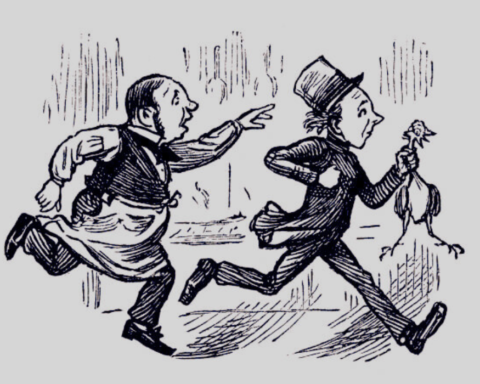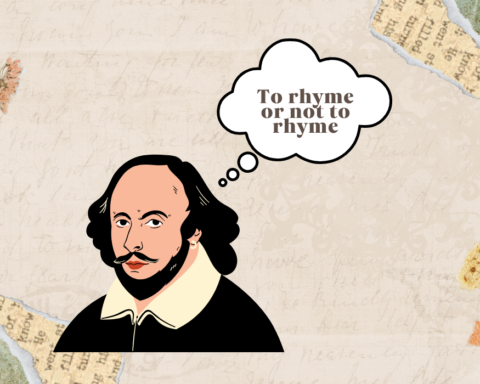The current day society either frowns upon the drastic weather changes in the world or fears it. However, they find that the melting polar ice caps, industrial greenhouse gas emissions, and geoengineering experiments are causing these modern weather changes.
What people don’t know is that the 19th-century authors imagined climate change. In the late nineteenth and early twentieth centuries, authors from a variety of ideologies and genres wrote stories that would now be considered climate fiction (cli-fi).
Authors such as Twain and Verne throughout literature use the idea that humanity is changing the climate. It is an over-the-top example of human hubris, per Asselinen.
According to Asselin, the 19th-century authors imagined climate change in stories such as “Louis P. Gratacap’s The Evacuation of England: The Twist in the Gulf Stream” and “George Griffith’s A Corner in Lightning.”
These Stories follow the theme of humans impacting the weather. Despite successful attempts to alter Earth’s climate, the protagonists faced results that had unexpected (and often disastrous) side effects on society. Recent cli-fi movies have the same storyline.
Whether it be everything freezing in “The day after tomorrow.” Snow covering the world like a blanket or, on the other hand, “2012” (the movie), which made us all believe the world was ending in 2012. These movies create a storyline on calamities, natural disasters, or scientific goof ups that can change the world.
In a similar manner, the 19th-century authors imagined climate change, and the protagonists in the story managed to make those global changes occur.
The result of those changes was uncontrollable and unfathomable. In that era, these stories were considered science fiction, but the current changes in weather throughout the world have made it evident that these writers were on to something.
Of course, by using geoengineering, a controversial future climate policy prospect, global warming could be reversed or slowed in today’s world. But climate once tempered with is very onerous to reverse, which has become a scientific concern.

When you still need to wear a coat in March (depending on where you live), or it’s sweaty when it’s supposed to be snowing. It is evident that these changes are not natural but instead planned or gone out of control.
In 1889, French author Jules Verne wrote a novel called “Sans Dessous Dessous” about capitalists heating the Arctic to extract coal. So humans controlling the weather for personal gains is not just a story of the past, but its applicable today.
The capitalist society, where the wealthy aspire to become wealthier without looking at the global consequences, is a cycle going on for a long. Verne depicts this in his book to point out the cause for the climatic change and how he thought it was occurring.
In his 1892 novel The American Claimant, Mark Twain included a subplot about selling warm climates. In selling the air and weather, the anti-capitalist authors wanted to reveal the inevitable end result of market-driven hubris.
In addition, the authors wanted to bring into the light the unjust total measures taken by the wealthy to makes money by distorting the weather.
What the writers imagined to be science fiction in that era has been a reality in this era as the capitalist society runs major institutes and controls everything. The results of their actions do impact the people and the climate. The consequences of these actions are harsh and may turn into something fatal in the future.
The literary scholar Steve Asselin recently reexamined these and dozens of other early sci-fi stories, finding several troubling themes relevant to how we think about climate change today.
First, proving that these changes were not a thing of the “now,” even the 19th-century authors penned books on these issues. This analysis hence demonstrates that these changes were written and read. They were a dominant part of society in the 20th and 19th centuries, even if they were considered cli-fi.
In Verne’s book, he creates a scenario where vast populations and nations were wiped out due to climatic change. According to Verne, this is a result of greed that the capitalist possesses. They do not take into regard the bitter results of their consequences but are extremely money-driven. Therefore, the loss of human life is of not much value to them.
On the other hand, Asselin claims that these climatic changes are supported to accumulate wealth. These stories share the same fear of socialism as modern conservatives about climate change—the link ‘climate policy’ to a loss of freedom and right to personal autonomy.
The cli-fi which we watch today was predicted a hundred years ago. However, these authors were on to something as these stories all relate to the current situation of the world.
The cli-fi movies went a bit overboard, but the changes in the pattern of the weather are clearly visible. The cli-fi film tends to make things a bit more dramatic than they can be. It is pretty hard for me to believe that the entire world would become one giant snowball. But this also does depend on what one perceives can come true.
As in my opinion, an earthquake can swallow the entire world’s population in a few minutes. If that does occur, it would be a horrible prediction. But the 19th-century writers seemed to have imagined such scenarios. So their predictions seem a bit more realistic than the cli-fi on television nowadays.
It indeed does not seem natural whatsoever but seems something to be concerned about. But, unfortunately, the stories of the 19th-century writers do not conclude what would be the future outcome of these actions. If they had given a clue, it would have been an essential piece of data as the information provided in the books a hundred years ago has been accurate so far.
So it would have been evident that even in the future, their prediction would have provided valuable information regarding what is to occur from all these drastic climatic changes. And measures could have been taken to improve the situation before it got worse.
Politigory provides in-depth reviews of science, history, humanities, religion, social sciences and arts









